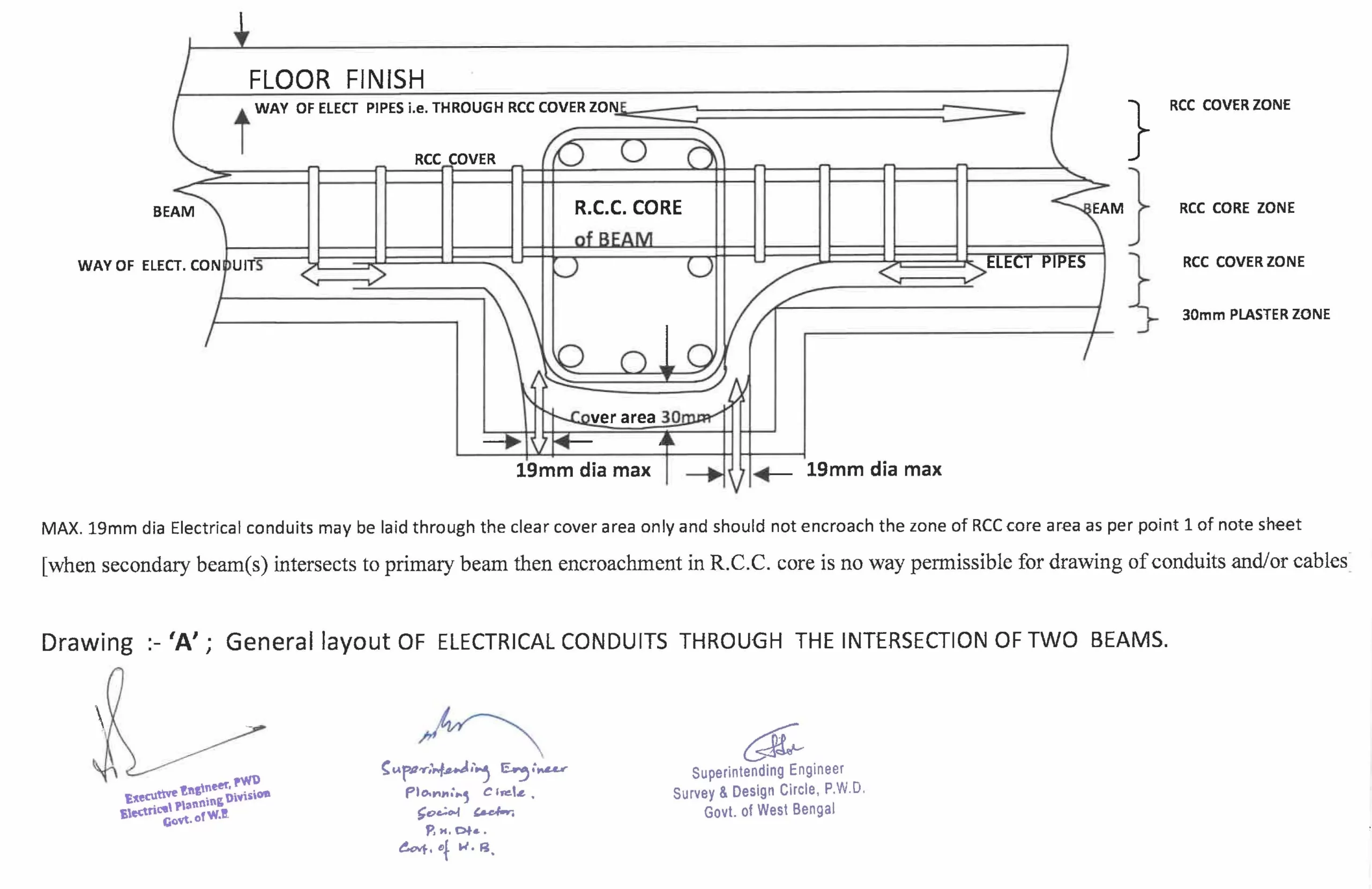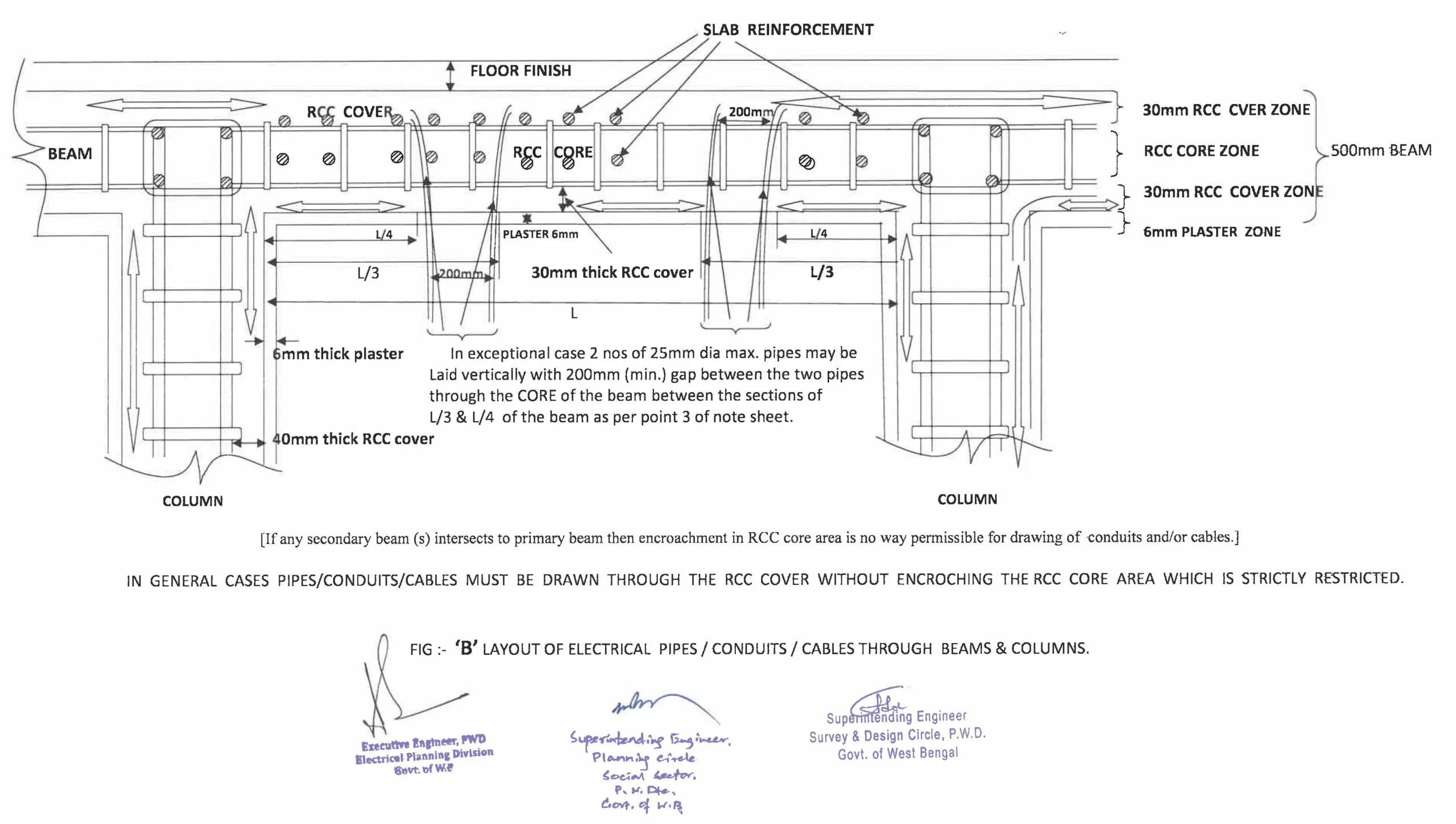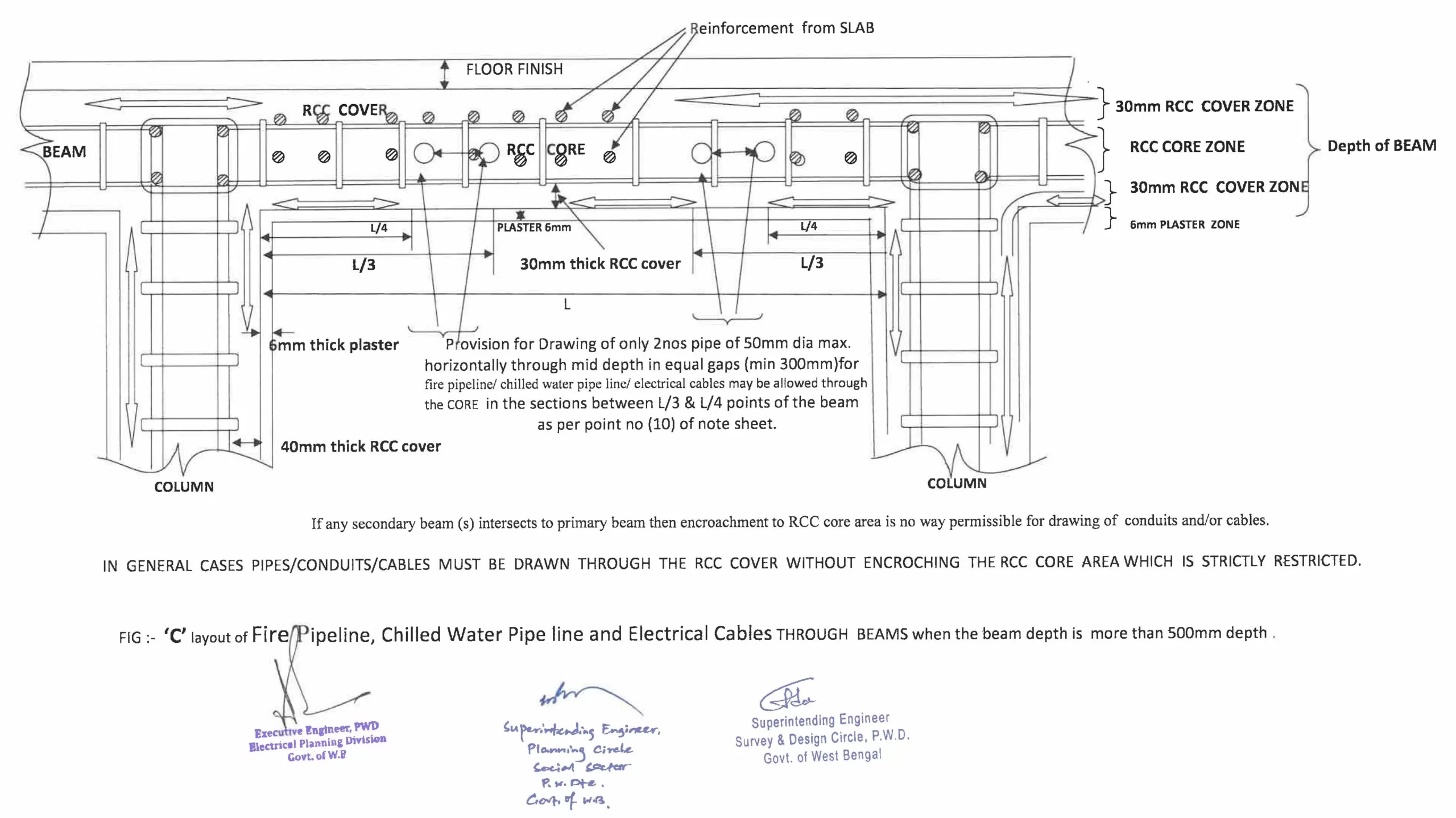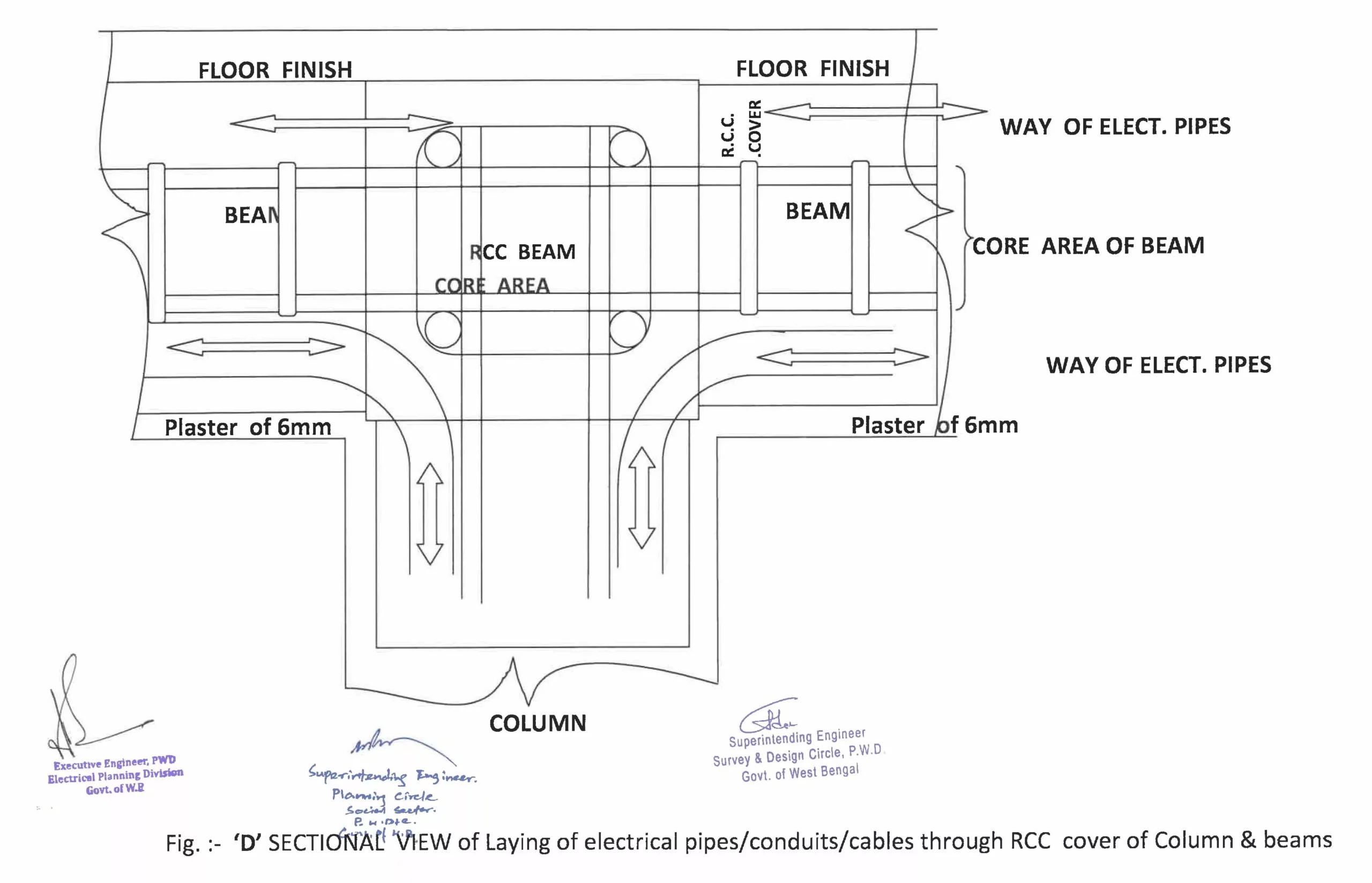Government of West Bengal
Engineer-in-Chief & E.O. Secretary
Public Works Department
‘NABANNA’, 8th Floor, Room No. 802
325, Sarat Chatterjee Road, Howrah – 711102
Tel No: (033) 2253-5164, Fax No: (033) 2214-1075
E-mail – encpwd2014@gmail.com
No.: 279-ENC/2021 Date: 25.05.2021
ORDER
SUB:- Guidelines regarding electrical cable layout plan through reinforced concrete members during construction of new buildings for the provision of concealed wiring.
Nowadays in every building construction, electrical conduits are laid for the provision of concealed wiring. To streamline the work of civil structural work and the work of laying of the electrical conduits properly, without hampering the strength and durability of the structural part of the building, the following guidelines are to be followed during construction of new buildings.
1) As per SOP it has to be fixed whether False Ceiling will be provided or not. In case of having the provision for False Ceilings in the rooms, concealed wiring must be avoided in the floor/ roof above the false ceiling.
2) Generally, electrical conduits (3/4 inch i.e. 19 mm dia.) must not encroach the reinforced core area of the columns and beams. Electrical conduits may be laid through the clear cover area only and should not encroach the zone of RCC core area (as per drawing – “A” enclosed).
3) Size of electrical conduits to be laid in the roof/ floor slabs for concealed wiring should strictly be restricted within 19 mm diameter.
4) In exceptional cases, two numbers 25 mm conduits within the reinforcement core area may be provided vertically through the beam between the sections of L/3 and L/4 from the support, considering acute necessity. Where “L” is the clear span of the beam (as per drawing “B”). However, if any secondary beam(s) intersects with primary beams then encroachment to RCC core area is not permissible for laying of conduits and/or cables.
5) For laying of IT cables, 25 mm (maximum) channels in required numbers are to be run through floors and the thickness of junction boxes will be 32 mm (maximum). These cables & junction boxes have to be accommodated within the reinforced covers of floor slabs including floor finishes.
6) If electrical conduits are to be passed from one room to another by crossing columns, in that case conduits must run through clear cover of the column only, without encroaching the RCC core area.
7) Generally, 250mm brick wall will be required below the beam, where conduits are brought down through internal masonry walls.
8) While placing the conduits horizontally or vertically through the clear cover zone of the beams & columns, those must be properly tied/clamped up with the beam/column reinforcement.
9) Wire mesh of suitable size should be attached to the surface of brick work or concrete (which has been cut for groove) along the conduit profile (cutting), before plastering with rich mortar to avoid any kind of shrinkage cracks.
10) If beam depth is more than 500 mm then 50 mm diameter conduits (max. two numbers) can cross between the section of L/4 and L/3 locations from support, horizontally through mid-depth of beam for running the fire pipeline, chilled water pipe line and electrical cables. This will not be applicable if there any secondary beam (s) intersects the primary beam at that location.
11) Conduits should not be laid after casting of beams and columns by demolishing different parts of reinforced concrete elements.
12) Conduits in floor/ roof slab should be placed in a scattered fashion and making clusters of conduits should be avoided.
13) Proper coordination should be maintained between Civil & Electrical wings to prevent any kind of communication gap for smooth progress of works. Joint site inspection should be organised before casting of floor or roof for checking the above-mentioned points.
Enclo:- Drawing “A”, “B”, “C”, “D”
This order will take immediate effect.
Engineer-in-Chief & E.O. Secretary
Public Works Department
No. 279-ENC dated 25.05.2021, Source



